
A whodunit is a complex plot-driven variety of detective fiction in which the puzzle regarding who committed the crime is the main focus. The reader or viewer is provided with the clues to the case, from which the identity of the perpetrator may be deduced before the story provides the revelation itself at its climax. The investigation is usually conducted by an eccentric, amateur, or semi-professional detective.

Edmund Crispin was the pseudonym of Robert Bruce Montgomery, an English crime writer and composer known for his Gervase Fen novels and for his musical scores for the early films in the Carry On series.
Christopher Robert Fowler was an English thriller writer. While working in the British film industry he authored fifty novels and short story collections, including the Bryant & May mysteries, which record the adventures of two Golden Age detectives in modern-day London. His awards include the 2015 CWA Dagger in the Library, The Last Laugh Award (twice) and the British Fantasy Award, the Edge Hill Prize and the inaugural Green Carnation Award. He was inducted into the prestigious Detection Club in 2021. His other works include screenplays, video games, graphic novels, audio and stage plays. He also wrote a psychological thriller, Little Boy Found, under the pseudonym L.K. Fox.
Ann Carol Crispin was an American science-fiction writer and the author of 23 published novels. She wrote several Star Trek and Star Wars novelizations; she also created an original science fiction series called StarBridge.

The Golden Age of Detective Fiction was an era of classic murder mystery novels of similar patterns and styles, predominantly in the 1920s and 1930s. The Golden Age proper is in practice usually taken to refer to a type of fiction which was predominant in the 1920s and 1930s but had been written since at least 1911 and is still being written today.
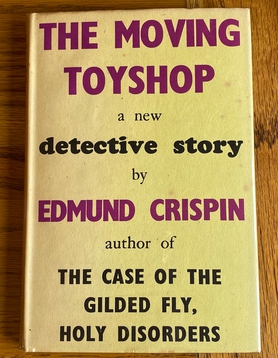
The Moving Toyshop (1946) is a work of detective fiction by Edmund Crispin, featuring his recurrent sleuth, Gervase Fen, an Oxford professor of English Language and Literature.
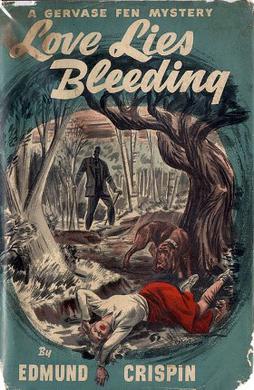
Love Lies Bleeding is a detective novel by Edmund Crispin, first published in 1948. Set in the post-war period in and around a public school in the vicinity of Stratford-upon-Avon, it is about the accidental discovery of old manuscripts which contain Shakespeare's long-lost play, Love's Labour's Won, and the subsequent hunt for those manuscripts, in the course of which several people are murdered. Collaborating with the local police, Oxford don Gervase Fen, a professor of English who happens to be the guest of honour at the school's Speech Day, can solve the case at the same weekend.
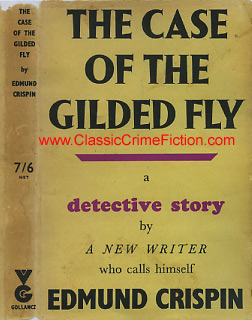
The Case of the Gilded Fly is a locked-room mystery by the English author Edmund Crispin, written while Crispin was an undergraduate at Oxford and first published in the UK in 1944. It was published in the US a year later under the title Obsequies at Oxford.
Gervase Fen is a fictional amateur detective and Oxford Professor of English Language and Literature created by Edmund Crispin. Fen appears in nine novels and two books of short stories published between 1944 and 1979. Fen is an unconventional detective who is often faced with a locked room mystery to solve.
Inspector Joseph French is a fictional British police detective created by Irish author Freeman Wills Crofts. French was a prominent detective from the Golden Age of Detective Fiction, appearing in twenty-nine novels and a number of short stories between 1924 and 1957. The character was introduced in the 1924 novel Inspector French's Greatest Case, where he investigates a fatal diamond robbery in Hatton Garden. The series relied largely on puzzle mysteries.
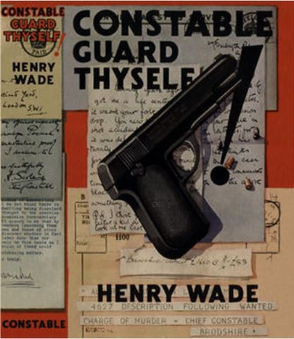
Constable Guard Thyself is a 1934 mystery detective novel by the British writer Henry Wade. It was the third in a series of seven novels featuring the character of Chief Inspector Poole, although it was preceded by the 1933 short story collection Policeman's Lot in which seven of the twelve stories had featured Poole. After his more experimental novel Mist on the Saltings Wade returned to the traditional detective model.
Godfrey Sampson was an English composer and organist, best remembered for his church and choral music.

Beware Your Neighbour is a 1951 detective novel by the British writer Cecil Street, writing under the pen name of Miles Burton. It was part of a lengthy series of books featuring the detective Desmond Merrion and Inspector Arnold of Scotland Yard. Unlike much of the series it takes place in suburban rather than rural England. Reviewing the novel in The Spectator Esther Howard wrote " I always find that Mr. Burton has nearly the most colourless detectives, prose-style and plots of anyone in the business, and Beware Your Neighbour, death in an exclusive thoroughfare, though mechanically adequate, is entirely devoid of excitement."
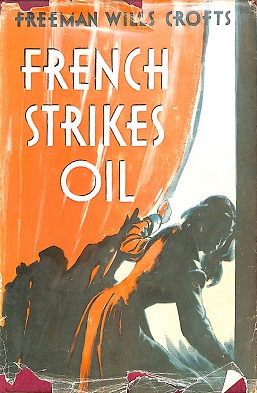
French Strikes Oil is a 1951 detective novel by the Irish-born writer Freeman Wills Crofts. It is the twenty eighth and penultimate entry in his series of novels featuring Inspector French, a Scotland Yard detective of the Golden Age known for his methodical technique. It was published in the United States by Dodd Mead under the alternative title of Dark Journey.

Holy Disorders is a 1945 detective novel by the British writer Edmund Crispin. It the second in his series featuring the Oxford professor and amateur detective Gervase Fen. The novel is set in 1940 during the early stages of the Second World War. The title is a reference to Chaucer.

Swan Song is a 1947 detective novel by the British writer Edmund Crispin, the fourth in his series featuring the Oxford Don and amateur detective Gervase Fen. It was the first in a new three-book contract the author has signed with his publishers. It received a mixed review from critics.
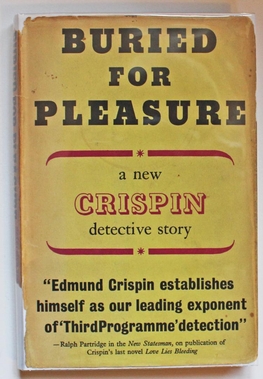
Buried for Pleasure is a 1948 detective novel by the British writer Edmund Crispin, the sixth in his series featuring the Oxford professor and amateur detective Gervase Fen. As with the rest of the Fen novels, a complex Golden Age-style mystery is combined with elements of farce. Fen contests a by-election in rural constituency, but events are rapidly overtaken by a murder case. It features Detective Inspector Humbleby who also appeared in the next novel Frequent Hearses as well as most of the short stories in the series.
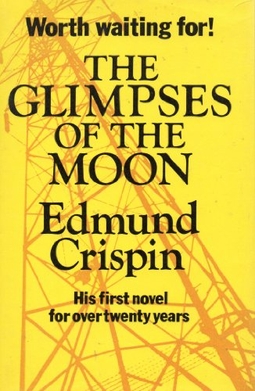
The Glimpses of the Moon is a 1977 detective novel by the British writer Edmund Crispin. It was the ninth and last novel in his series featuring Gervase Fen, an Oxford professor and amateur detective. Written from the 1960s onwards on publication it was the first novel in the series to be released since The Long Divorce in 1951. The author died the following year and in 1979 a final work Fen Country, a collection of short stories featuring the detective, was publish posthumously.
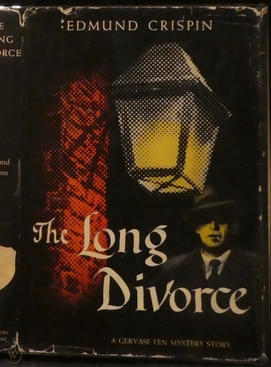
The Long Divorce is a 1951 detective novel by the British writer Edmund Crispin, the eighth in his series featuring the Oxford professor and amateur detective Gervase Fen. It was the penultimate novel in the series, with a gap or more than twenty five years before the next entry The Glimpses of the Moon, although a collection of short stories Beware of the Trains was published in 1953. The novel features many traits of a Golden Age mystery, set in a small, wealthy English village. The title doesn't refer to a marriage but is a quote from Shakespeare's Henry VIII "the long divorce of steel". It was published in the United States by Dodd, Mead in 1951 under the same title, and a year later as A Noose for Her.

Frequent Hearses is a 1950 detective novel by the British author Edmund Crispin. It is the seventh in his series of novels featuring Gervase Fen an Oxford University professor and amateur detective. Published during the Golden Age of Detective Fiction, it is set in the British film industry where Fen has been employed as a historical advisor on The Unfortunate Lady, a biopic of the English poet Alexander Pope. The title is taken from a line of Pope's Elegy to the Memory of an Unfortunate Lady, "on all the line a sudden vengeance waits, and frequent hearses shall besiege your gates". It was published in the United States by Dodd, Mead the same year under the alternative title Sudden Vengeance.














